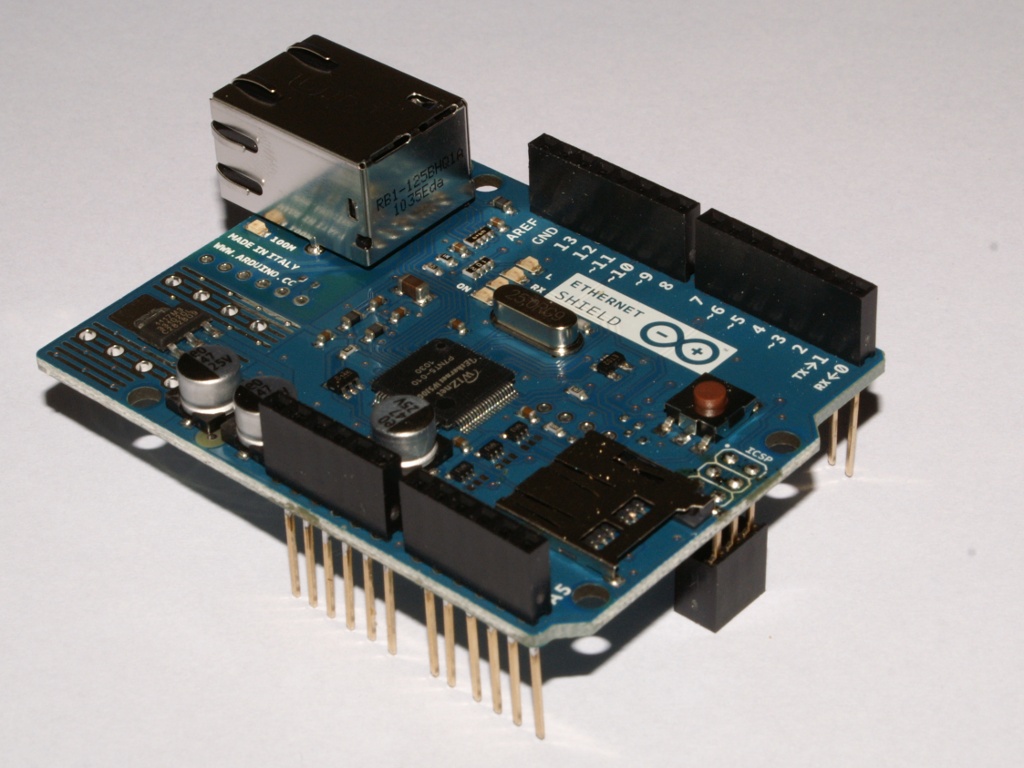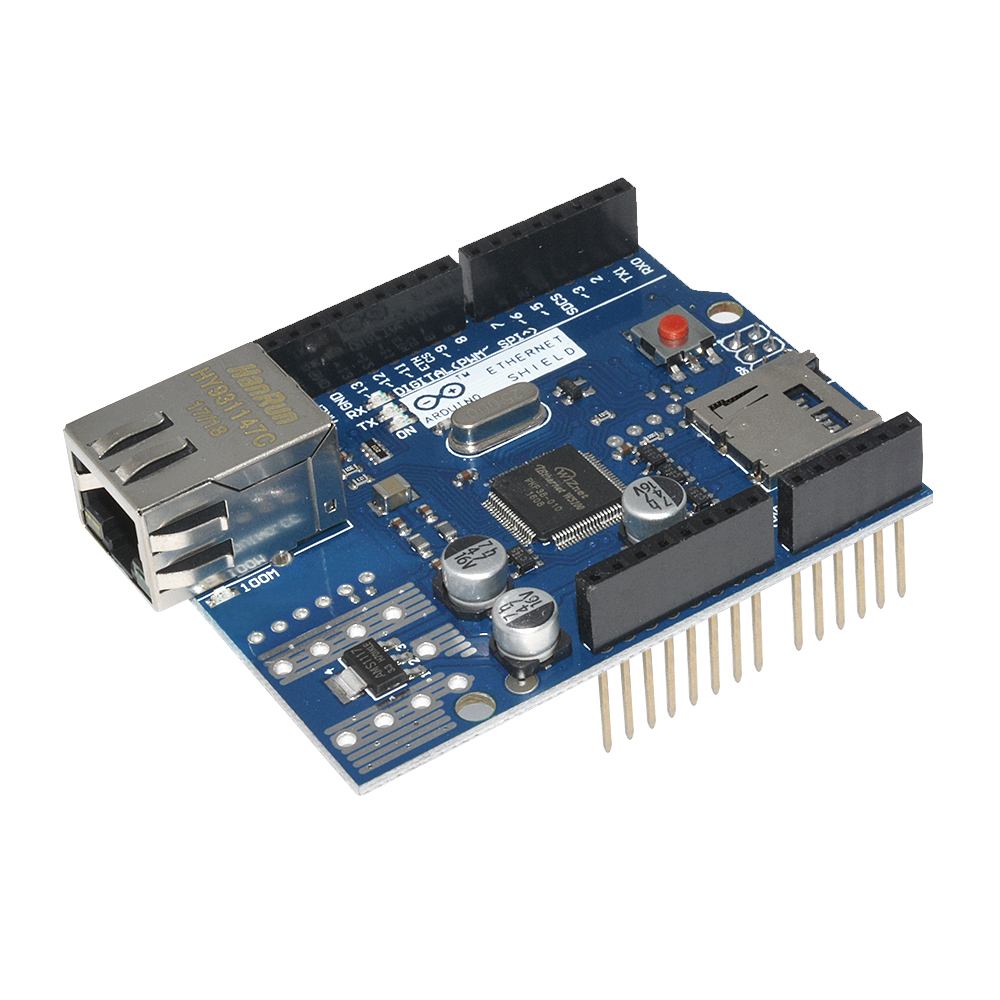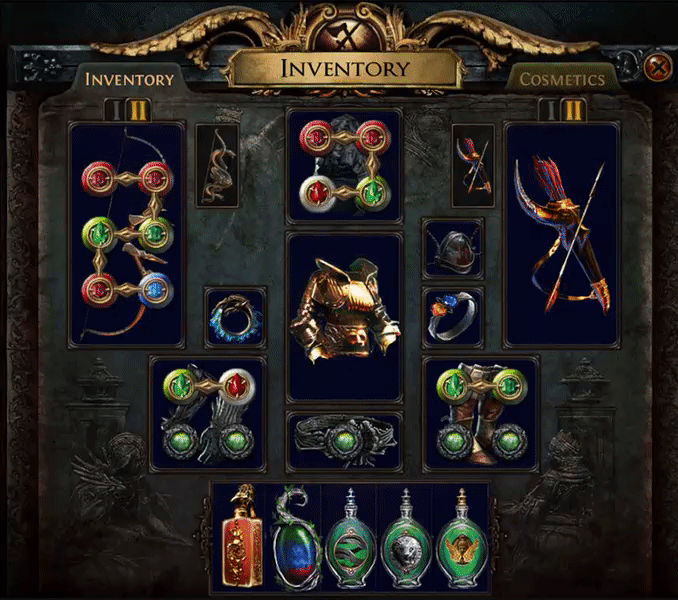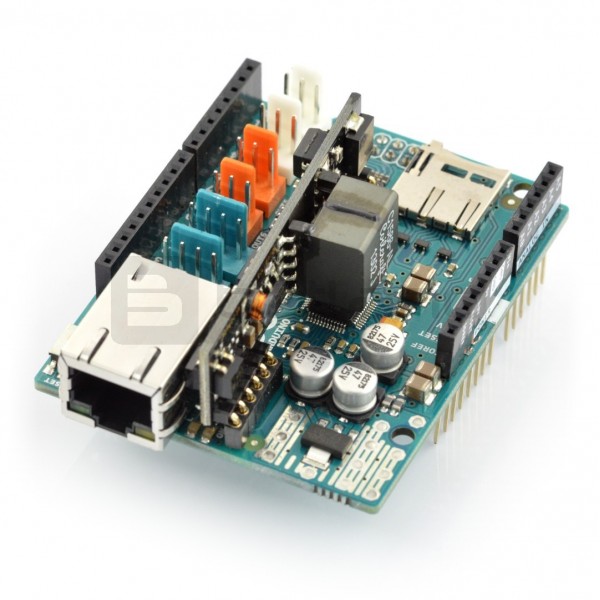Poe Shield Slots

The Arduino Ethernet Shield 2 with PoE connects your Arduino to the internet in mere minutes. Just plug this shield into your Arduino Board, connect it to your network with an RJ45 cable (not included) and follow a few simple steps to start controlling your world through the internet. As always with Arduino, every element of the platform – hardware, software and documentation – is freely available and open-source. This means you can learn exactly how it's made and use its design as the starting point for your own circuits. Hundreds of thousands of Arduino Boards are already fueling people’s creativity all over the world, everyday. Join us now, Arduino is you!
*Requires an Arduino Board (not included)
Shields are an item class of armour equipment. They can contain up to 3 sockets and need to be equipped in the off-hand slot. All shields provide a chance to block attacks, and some also grant implicit modifiers. Like Body Armour, shields have an inherent 3% movement speed penalty. Its a GG Tegra4 Archon shield: Newest iLvl Android OS (Jellybean) High Element and Environment Resists 72 Core GeForce GPU Quad Arm A15 CPU Dual MIMO support w/ Bluetooth. Multiple exalt slots remaining.

- Operating voltage 5V (supplied from the Arduino Board)
- Ethernet Controller: W5500 with internal 32K buffer
- Connection speed: 10/100Mb
- Connection with Arduino on SPI port

The Shield has a Power over Ethernet (PoE) module designed to extract power from a conventional Ethernet cable.
You can find your board warranty information here.
- While I only used it for auras myself, I'm pretty sure the intended reason was to have like a 1h/shield combo for tough battles, or a skill switch, like keeping a dmg heavy strike on main wpns then an MF heavy strike on 2nd set for last hit. Also very early game my roommate playing maura will keep a bow in his 2nd set for facing Brutus.
- However POE doesn't really restrict your options by equipment that much. You choose builds based on what skill you want to use instead of weapon type. I'd recommend molten strike Jugg. You'll never die and it uses a sword and shield. In general LifeResistancesDamage. Get life and resists on all your equipment.
- There are 4-5 possible affixes and only 3 slots available, so something has to give. To maximize the possible affixes for each armor slot you need to consider what can possibly roll on each slot. Specifically the fact that chest & shield slots roll very high flat defenses compared to other item slots and basically the same +hp bonuses.
Getting Started

In the Getting Started section, you can find all the information you need to configure your board, use the Arduino Software (IDE), and start to tinker with coding and electronics.
Need Help?
- Learn more on the Ethernet Shield 2 in the Ethernet2 Library reference
- Get assistance with your projects in the Arduino Forum
- Contact us through our Customer Support
The Arduino Ethernet Shield 2 allows an Arduino Board to connect to the internet. It is based on the (Wiznet W5500 Ethernet chip). The Wiznet W5500 provides a network (IP) stack capable of both TCP and UDP. It supports up to eight simultaneous socket connections. Use the Ethernet library to write sketches that connect to the Internet using the Shield. The Ethernet Shield 2 connects to an Arduino Board using long wire-wrap headers extending through the Shield. This keeps the pin layout intact and allows another Shield to be stacked on top of it.
The most recent revision of the board exposes the 1.0 pinout on rev 3 of the Arduino UNO Board.
Poe Shield Slots Games
The Ethernet Shield 2 has a standard RJ-45 connection, with an integrated line transformer and Power over Ethernet enabled.
There is an onboard micro-SD card slot, which can be used to store files for serving over the network. It is compatible with the Arduino Uno and Mega (using the Ethernet library). The onboard micro-SD card reader is accessible through the SD Library. When working with this library, SS is on Pin 4. The original revision of the Shield contained a full-size SD card slot; this is not supported.
The Shield also includes a reset controller, to ensure that the W5500 Ethernet module is properly reset on power-up. Previous revisions of the Shield were not compatible with the Mega and needed to be manually reset after power-up. The current Shield has a Power over Ethernet (PoE) module designed to extract power from a conventional twisted pair Category 5 Ethernet cable.
PoE module features as follows:
- IEEE802.3af compliant
- Input voltage range 36V to 57V
- Overload and short-circuit protection
- 12V Output
- High efficiency DC/DC converter: typ 85% @ 80% load
- 1500V isolation (input to output)

NB: the Power over Ethernet module is proprietary hardware not made by Arduino, it is a third party accessory. For more information, see the datasheet
The Shield does not come with a built in PoE module, it is a separate component that must be added on. Arduino communicates with both the W5500 and SD card using the SPI bus (through the ICSP header). This is on digital pins 10, 11, 12, and 13 on the Uno and pins 50, 51, and 52 on the Mega. On both boards, pin 10 is used to select the W5500 and pin 4 for the SD card. These pins cannot be used for general I/O. On the Mega, the hardware SS pin, 53, is not used to select either the W5500 or the SD card, but it must be kept as an output or the SPI interface won't work.
Note that because the W5500 and SD card share the SPI bus, only one at a time can be active. If you are using both peripherals in your program, this should be taken care of by the corresponding libraries. If you're not using one of the peripherals in your program, however, you'll need to explicitly deselect it. To do this with the SD card, set pin 4 as an output and write a high to it. For the W5500, set digital pin 10 as a high output.
- The Shield provides a standard RJ45 Ethernet jack.
- The reset button on the Shield resets both the W5500 and the Arduino Board.
- The Shield contains a number of information LEDs:
- ON: indicates that the Board and Shield are powered
- LINK: indicates the presence of a network link and flashes when the Shield transmits or receives data
- FDX: indicates that the network connection is full duplex
- 100M: indicates the presence of a 100 Mb/s network connection (as opposed to 10 Mb/s)
- ACT: flashes when RX or TX activity is present
This shield also hosts Tinkerkit compatible connectors as follows:
- 2 TinkerKit connectors for two Analog Inputs (in white), connected to A2 and A3.
- 2 TinkerKit connectors for two Aanlog Outputs (in orange in the middle), connected to PWM outputs on pins D5 and D6.
- 2 TinkerKit connectors for the TWI interface (in white with 4 pins), one for input and the other one for output.
OSH: Schematics
Arduino Ethernet Shield is open-source hardware! You can build your own board using the following files:
Do you own a past version of this product? Check the Arduino Ethernet Shield V1 product page.
While playing the game, I am often surprised how many people actually do not know some very useful recipes that would make their life inside the game so much easier. So I decided to compile a list of recipes that I often use and share them with you.
Vaal Orb recipe
This is, in my opinion, one of the most important PoE vendor recipes, yet a lot of people haven’t even heard about it. The recipe lets you obtain Vaal orbs. The recipe works as follows – selling 7 Vaal Skill gems + 1 Sacrifice at Dawn/Dusk/Noon will give you 1 Vaal orb. Do not use Sacrifice of Midnight for this recipe, that would be terrible waste of currency. You can check out more about Vaal Orb here.
40% quality recipe
This is very useful recipe for getting quality enhancing currency – blacksmith’s whetstones, armorer’s scraps, cartographer’s chisels and gemcutter’s prisms. Selling armor will give you scraps, weapons will give you whetstones, maps will give you chisels and skill gems will give you gemcutter’s prisms.
It works as follows – you need armor, weapons, maps or flasks with total quality of 40% or more for this recipe to work. For example, if I want 1 armorer’s scrap, I will sell chest armor with 16% quality + boots with 15% quality + helm with 12% quality. The same applies for flasks, weapons, maps and skill gems. One tip – do not use gems with quality greater than 10% for this recipe, better sell them to other players for greater profit.Here you can see this vendor recipe with 3 currency items at once.
Cartographer’s Chisel recipe.
This is vendor recipe involving Stone hammers, Rock Breakers and Gavels, otherwise not very often used items, except for unique version of Gavel – Mjolner.
Recipe works as follows – you have to sell 1 Stone hammer/Rock breaker/Gavel with 20% quality + any map (my suggestion is use lower tier maps) to vendor and it will give you 1 chisel.Map upgrade recipe
Very simple recipe, yet I have seen people mapping and being unaware about this recipe. It works as follows – 3 maps of same level will give you map one level higher. For example, selling 3 Tier 1 maps to vendor will give you 1 Tier 2 map. For recipe to work, all the maps have to be the same.
Physical damage / Spell damage recipe
This is my favorite recipe to use while I am leveling new characters. It allows you to create quite powerful weapons for new characters with very little currency investment.
The recipe consists of 2 parts – one for increased physical damage, another for increased spell damage. It works as follows:Physical damage recipe: weapon + blacksmith’s whetstone + rustic sash. The increased physical damage value will depend on rarity of the rustic sash – normal sash will give you 20-49% physical damage, magic sash will give you 50-69% physical damage and rare sash will give you – 70-89% physical damage on your weapon.
Spell damage recipe: dagger/sceptre/wand/staff + blacksmith’s whetstone + chain belt. The increased spell damage value will depend on rarity of chain belt – normal belt will give you 10-19% spell damage, blue belt will give you 20-29% spell damage and rare belt will give you 30-39% spell damage on your weapon.
+1 to level of gems recipe
This is very useful recipe to boost level of your skill gems while leveling. This recipe adds +1 to level of fire/lightning/cold gems mod to an item. It works as follows – Magic wand/sceptre + Ruby Ring(fire gems)/Topaz Ring(lightning gems)/Sapphire Ring(cold gems) + Orb of Alteration.
Chromatic Orb recipe
This recipe is the most popular way to gather Chromatic Orbs over time since you don’t use them a lot after you have all the desired socket colors. The recipe works as follows: sell any item with at least 3 linked sockets with the following colors – 1 blue, 1 red, and 1 green.
Level 20 Skill gem recipe
This is good recipe to earn some spare currency while leveling. It works as follows – any level 20 skill gem + 1 gemcutter’s prism will give you the same skill gem, but level 1 and with 20% quality. Great way to earn some currency is buying some decently high level gems and leveling them by putting them in your swapped weapon sockets. When they are level 20, just use this recipe and you will be able to make some decent amount of currency by selling 20% quality gems to other players.
Skill gem level reduction
Sometimes you get into a situation when you level up your skill gem one level too high (good example would be gems in cast when damage taken setup). This vendor recipe allows you to downgrade Skill gem by one level and works as follows – 1 skill gem + 1 Orb of scouring – it will give you skill gem one level lower.
Jeweler’s Orb recipe
When you are approaching endgame, items with 6 sockets start to drop. When you trade item with 6 sockets to vendor, you receive 7 Jeweler’s Orbs.
Conclusion
Poe Shield Slots Online
There are a lot of recipes in this game and I covered those I love to use often. If you want to see all of them, good idea would be to browse Path of Exile wiki page.
If you missed some previously posted information, check out the page about currency, it will help you understand this guide better – PoE currency
Poe Shield Slots Game
Please share the guide with others if you found it helpful! 🙂